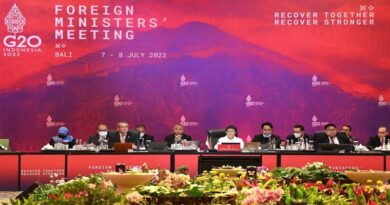CIMMYT announces 2030 Strategy
CIMMYT recognizes all organizations with a mandate to contribute to the development sector must consider transformations in the underlying systems to create sustainable and equitable interventions.
09 August 2023, EU: The world’s food systems are under threat by escalating armed conflicts, economic stagnation, the effects of the climate crisis and natural resource degradation. Against this backdrop, the next seven years are crucial in meeting the challenges of keeping the world’s growing population fed and secure.
Recognizing that business as usual will not be sufficient, CIMMYT has embarked on a journey to proactively face the new challenges of the 21st century. This novel approach to agrifood systems is the core of CIMMYT’s 2030 Strategy, which has the potential to shape the future of agriculture.
“We understand that the challenges facing food security are complex, varied and rapidly changing. For instance, the effects of COVID-19 and Ukraine-Russia conflict on food systems are still being felt today. With that in mind, we set out to develop a strategy that is both robust and nimble. The best way to create a sustainable and inclusive strategy was to engage directly with CIMMYT scientists and staff, the people on the front lines of this effort to deliver food and nutrition security to the world,” said CIMMYT Director General Bram Govaerts.
Looking back to move forward
The first step in crafting the 2030 Strategy was looking at where does CIMMYT want the world to be in 2100. In answering this question, CIMMYT crafted a long-term vision of how it wants to engage in a changing world and achieve the transformation to a food and nutrition secure world within planetary boundaries. CIMMYT has integrated the use of foresight and specifically a set of 2030 Food and Agriculture scenarios to explore potential changes in intervention areas over the strategic period and help prepare engagements in different contexts across the globe. These scenarios are a decision-making tool that has underpinned the development of the strategy to ensure that it is context-driven and focused on the most pressing challenges facing the agrifood systems in which CIMMYT operates.
From the future CIMMYT looks back at its history and examines how its core business has evolved over the years to proactively meet ever-changing needs across the world.
At each stage of CIMMYT’s evolution, it has taken its strengths and the skills it has built and added to its experience, and expanded on what it delivers while maintaining the core strengths.
In CIMMYT’s earliest days, the mission was developing and improving germplasm and agronomic practices, then CIMMYT began working more closely with farmers (1980s), broadened emphasis in genetic improvements (2000), embarked on sustainable multidisciplinary projects (2010s), and most recently, advancing technologies in participatory innovation systems (2015-2022). All leading to the mission codified in the 2030 Strategy: accelerating food systems transformation by using the power of collective action.
Now, in 2023, CIMMYT’s progress is being shaped by the CGIAR mission statement: “To deliver science and innovation that advance the transformation of food, land, and water systems in a climate crisis.”
Building the Strategy
To define the 2030 Strategy, CIMMYT responded to the following core questions:
- What does success look like?
- Where can CIMMYT deliver the most value?
- How can CIMMYT deliver value for communities?
“As an organization, we have concentrated on strategies that foster collaboration and adapt them for a non-profit international organization whose vision is not to grow as an institution but to deliver greater value for the communities they serve, to innovate for the end users of their products and to ensure a better future for our global community,” said Govaerts.
The tools used to develop the elements of this strategic plan leveraged the framework provided in the CGIAR Research and Innovation Strategy to guide the process. Staff from across the Center engaged in a consultative process to develop the objectives for following strategic components: Excellence in Science and Innovation, Excellence in Operations, Talent Management, Resource Mobilization, Partnership, and Influence.
Developing the Excellence in Science and Innovation component serves as an example of this collaborative, bottom-up approach. Planning was led by the Emerging Thought Leaders Group, made up of 24 early and mid-career scientists across the breadth of CIMMYT’s global and program portfolio. The group worked collaboratively with CIMMYT researchers and staff to first delineate the challenges facing agri-food systems and then workshopped solutions which now serve as the foundation of the 2030 Strategy.
“Each component complements the others,” said Govaerts. “This is our answer to the core questions. Only by working collectively can we initiate sustainable solutions that reach everyone.”
Together, the components create a network to support CIMMYT’s three pillars: Discovery (research and innovation), SystemDev (working collaboratively to innovate foundational systems), and Inc. (incubating startups and new ways of doing business in the agri-food system space).
CIMMYT is leading the way in shaping a sustainable and prosperous agricultural landscape
The goal to facilitate food security where sustainable agriculture is part of the solution to the climate crisis and agriculture provides an avenue to build household resilience and enables communities to pull themselves out of poverty requires the strategic use of resources. CIMMYT’s 2030 Strategy, built from the bottom up on a foundation over 50 years’ experience and the expertise of scientists, staff, and farmers maximizes resources, enhances dynamic partnerships, and both retains and recruits a world-class staff in a world of growing challenges to food security.
Also Read: Bayer, GenZero, and Shell collaborate to reduce methane emissions in rice cultivation
(For Latest Agriculture News & Updates, follow Krishak Jagat on Google News)















